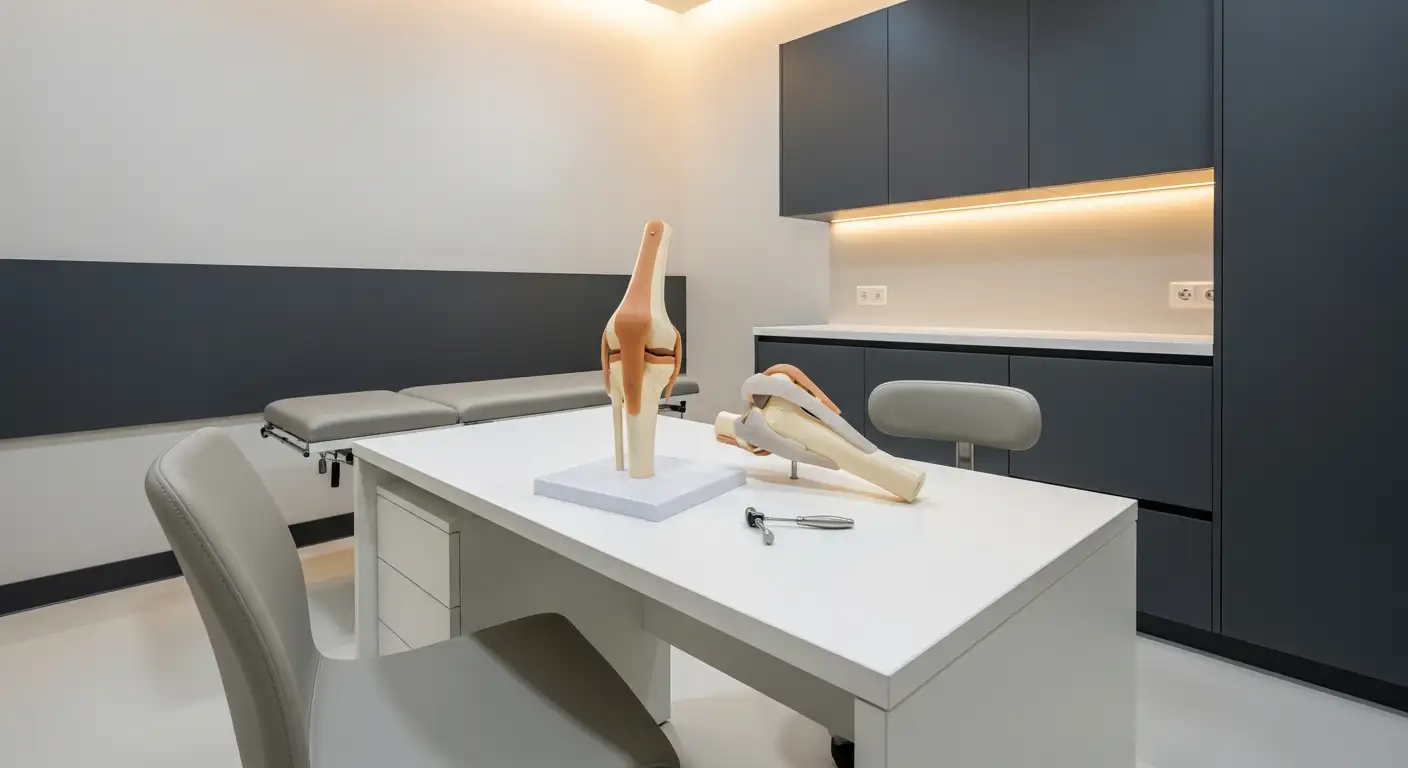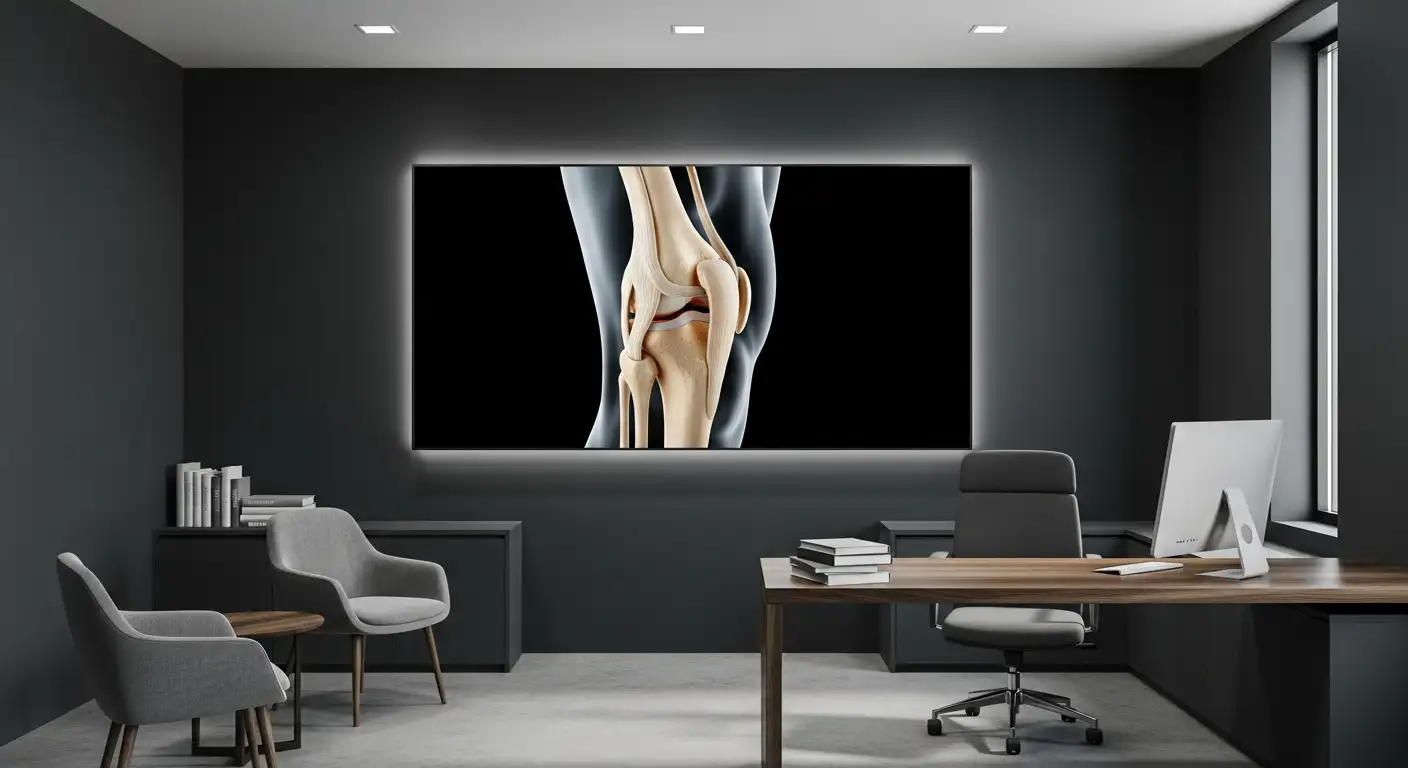Understanding Meniscus Tears
When it comes to knee joint issues, meniscus tears are a common concern. To better understand the possible meniscus tear symptoms, it's essential to first comprehend what a meniscus tear is and its common causes.
What is a Meniscus Tear?
A meniscus tear involves an injury to the meniscus, the C-shaped cartilage in the knee joint that acts as a cushion between the shinbone and thighbone. Symptoms often include pain, stiffness, swelling, a sensation of the knee "giving way," popping or clicking, and difficulty moving the knee through its full range of motion. In some cases, a person may experience a "pop" at the time of injury [1].

Common Causes of Meniscus Tears
Meniscus tears can occur due to a variety of reasons, most commonly due to injury during sports or physical activities. Forceful twisting or rotating the knee, often seen during sports like soccer, basketball, or skiing, can result in such injuries.
However, it's not just sports or physical activities that can cause a meniscus tear. The natural aging process can also lead to meniscus tears, where the meniscus weakens and wears thin over time. These are often referred to as degenerative tears, more common in older individuals experiencing wear and tear of the knee joint.
By understanding the common causes of meniscus tears, individuals can take preventive measures to minimize the risk of such injuries. However, if one experiences any meniscus tear symptoms, it's crucial to seek medical attention promptly to prevent further complications.
Recognizing Meniscus Tear Symptoms
Understanding the symptoms of a meniscus tear is vital for timely diagnosis and treatment. Symptoms can vary from person to person, depending on the extent and location of the tear. However, there are some common signs that can indicate a potential meniscus tear.
Initial Symptoms
The initial symptoms of a meniscus tear often include pain, stiffness, and swelling in the knee joint UW Medicine. Some individuals may also experience a distinct "pop" at the time of injury. This could be accompanied by the sensation of the knee "giving way", indicating a potential issue with stability. Difficulty moving the knee through its full range of motion is another common symptom, often making it hard to bear weight on the affected leg Mayo Clinic.

Progressing Symptoms
As the condition progresses, the symptoms of a meniscus tear may become more pronounced. A sensation of popping or clicking within the knee joint when moving could become more frequent. In some cases, despite having a tear, individuals may still be able to walk and even participate in physical activities. However, they may experience significant pain and limited mobility Mayo Clinic.

Recognizing these symptoms early and seeking medical attention can help prevent further damage and complications. It's essential to listen to your body and not ignore any persistent discomfort or changes you notice in your knees. If you experience any of these meniscus tear symptoms, consider consulting with a healthcare professional for a thorough evaluation.
Diagnosis of Meniscus Tears
Diagnosing a meniscus tear is a comprehensive process that involves both a physical examination and a series of imaging tests. An accurate diagnosis is crucial in determining the most appropriate treatment options.
Physical Examination
The first step in diagnosing a meniscus tear involves a physical examination. The physician will look for signs of swelling and assess the range of motion in the knee. The examination may also involve a thorough evaluation of the patient's health history, particularly any previous knee injuries or conditions.
During the physical examination, the doctor may perform specific maneuvers to put pressure on the meniscus and determine whether it triggers pain or other symptoms. These tests can provide valuable information about the location and extent of the injury.
It's important to note that not all meniscus tears cause symptoms. In some cases, the tear may be an incidental finding on an imaging study. Therefore, the presence of symptoms, along with a thorough clinical evaluation, is essential for making an accurate diagnosis [2].
Imaging Tests
In addition to a physical examination, imaging tests are often conducted to evaluate the damage and confirm the diagnosis. These tests may include X-rays, which can rule out other conditions that cause knee pain, such as osteoarthritis.
Another commonly used imaging test is magnetic resonance imaging (MRI). An MRI can produce detailed images of the knee and help the doctor visualize the meniscus tear. It's a highly effective tool for confirming the diagnosis and further assessing the knee joint.
In some cases, if the diagnosis is still unclear after an MRI or if the patient is a candidate for surgery, a procedure known as knee arthroscopy might be recommended. This minimally invasive procedure allows the physician to view the inside of the knee joint and obtain a more accurate diagnosis.
Through these diagnostic methods, physicians can identify meniscus tear symptoms, confirm the diagnosis, and develop an appropriate treatment plan. It's essential for anyone experiencing knee pain or other potential meniscus tear symptoms to consult a healthcare provider for a thorough evaluation.
Treatment Options for Meniscus Tears
Identifying meniscus tear symptoms early is crucial to obtaining appropriate treatment. This section will detail both non-surgical and surgical treatments for meniscus tears.
Non-Surgical Treatments
For less severe meniscus tears, non-surgical treatments can often effectively manage symptoms and promote healing. Nonsteroidal anti-inflammatory drugs (NSAIDs) can be used to alleviate pain and reduce swelling.
Alongside medication, following the RICE protocol – Rest, Ice, Compression, Elevation – can further aid recovery. Rest allows the knee time to heal, ice reduces swelling, compression helps limit inflammation, and elevation can assist with fluid drainage and reduce swelling.
If the injury does not improve with these conservative measures, physical therapy may be recommended. This can strengthen the muscles around the knee, improve its stability, and promote flexibility.
Surgical Treatments
In cases where the meniscus tear symptoms persist or the injury is severe, surgical treatment may be necessary. The current primary method for treatment of meniscus tears is partial meniscectomy, which involves removal of the damaged part of the meniscus. However, it's worth noting this method can lead to the progressive development of osteoarthritis.
Knee arthroscopy, a minimally invasive procedure, is commonly used to treat meniscal tears. It involves inserting an arthroscope to repair or trim the torn portion of the meniscus. For younger patients, preserving as much of the meniscus as possible is crucial for knee health.
In recent years, research interest has shifted towards the fields of biomaterials and bioengineering for the treatment of meniscus tears. Tissue engineering approaches show promise in tackling meniscal deterioration. Different approaches and strategies in tissue engineering have contributed to the in vitro generation of meniscus constructs, which are capable of restoring meniscal lesions to some extent, both functionally and anatomically [5].
Ultimately, the choice of treatment will depend on several factors, including the severity of the meniscus tear, the patient's age, activity level, and overall health. It's crucial to discuss with a healthcare professional to decide the best course of treatment for individual circumstances.
Complications of Untreated Meniscus Tears
Leaving a meniscus tear untreated can lead to complications that worsen over time. Therefore, understanding the long-term risks and preventive measures can help in managing the condition effectively.
Long-term Risks
If a meniscus tear is not treated promptly, it can lead to persistent knee pain, limited mobility, and, over time, an increased risk of developing knee osteoarthritis.
Individuals may experience symptoms that can intensify over time, such as knee pain, swelling, stiffness, and difficulty straightening the leg [6]. There may also be sensations of popping or clicking within the knee joint when moving.
In severe cases, individuals may experience a decreased range of motion in the affected knee, causing significant discomfort and difficulty participating in physical activities. There may also be a sense of instability in the knee, leading to feelings of weakness, buckling, or the knee giving way during weight-bearing activities.
Prevention Measures
Preventing the complications of untreated meniscus tears involves seeking timely medical attention when meniscus tear symptoms are noticed. These symptoms may include sensations of popping, stiffness, swelling, and limited range of motion in the affected knee. These symptoms can worsen over time, leading to difficulty straightening the leg fully [7].
In some cases, individuals may experience a locking sensation in the knee joint, making it difficult to fully extend the leg. This could indicate the presence of a meniscus tear and necessitate a medical evaluation for diagnosis and treatment [7].
It's important to be aware of these symptoms and seek medical advice if they persist. Early diagnosis and treatment can help prevent long-term complications and maintain the health and functionality of the knee.
Emerging Treatments and Research
While current treatment options for meniscus tears have their merits, they also have limitations. Recognizing this, research is being directed towards more innovative approaches to effectively treat meniscal injuries. In this section, we'll explore some of these promising developments, focusing on tissue engineering and the future directions in meniscal repair.
Tissue Engineering Approaches
Tissue engineering has shown great promise in the realm of meniscal repair. This approach seeks to generate constructs in vitro that can restore meniscal lesions to some extent, both functionally and anatomically.
The success of meniscal tissue engineering relies heavily on the selection of the appropriate cell source. A variety of cell sources are under consideration, including autologous, allogeneic, or xenogeneic cells, or stem cells. Each of these options brings with it unique advantages and challenges, and research is ongoing to determine the most effective cell source for meniscal tissue engineering.
However, it's important to bear in mind that tissue engineering is a complex process that requires precise control over multiple parameters, including cell type, scaffold type, and growth factors. As such, while promising, these techniques are still in the early stages of development and require further research and refinement before they can be widely implemented.
Future Directions in Meniscal Repair
The future of meniscal repair lies in the development of innovative techniques that can effectively heal lesions located in the inner avascular region of the meniscus. This region operates under a demanding mechanical environment, making it a significant challenge for current repair techniques.
One of the primary methods for treating meniscus tears today is partial meniscectomy. However, this procedure often leads to the progressive development of osteoarthritis, highlighting the need for more effective treatment options.
As a result, research interest has shifted towards biomaterials and bioengineering. These fields hold the potential to create new and better solutions for treating meniscus tears, moving away from the limitations of current surgical options.
While the future of meniscal repair is exciting, these potential treatments are still in the research and development phase. As the science progresses, we can hope to see more effective and less invasive treatments for meniscus tear symptoms.
References
[1]: https://www.uwmedicine.org/conditions-symptoms/bone-joint-muscle/torn-meniscus
[2]: https://drlouisshidiak.com.au/meniscus-role-knees-function/
[3]: https://my.clevelandclinic.org/health/diseases/17219-torn-meniscus
[4]: https://www.hopkinsmedicine.org/health/conditions-and-diseases/torn-meniscus
[5]: https://www.ncbi.nlm.nih.gov/pmc/articles/PMC3161498/
[6]: https://www.mayoclinic.org/diseases-conditions/torn-meniscus/symptoms-causes/syc-20354818
[7]: https://www.mayoclinic.org/diseases-conditions/torn-meniscus/diagnosis-treatment/drc-20354823





